CMMC Practice CM.L2-3.4.6 – Least Functionality: Employ the principle of least functionality by configuring organizational systems to provide only essential capabilities.
Links to Publicly Available Resources
This document provides guidance on Microsoft security features and tools that can be used to harden Windows 10 Enterprise Edition. CIS Hardened Images are virtual machine emulations preconfigured to provide secure, on-demand, and scalable computing environments in the cloud. This document provides assessment guidance for conducting Cybersecurity Maturity Model Certification (CMMC) assessments for Level 2. The Security Technical Implementation Guides (STIGs) are the configuration standards for DOD IA and IA-enabled devices/systems. The STIGs contain technical guidance to “lock down” information systems/software that might otherwise be vulnerable to a malicious computer attack. The National Checklist Program (NCP), defined by the NIST SP 800-70, is the U.S. government repository of publicly available security checklists (or benchmarks) that provide detailed low level guidance on setting the security configuration of operating systems and applications. Best practices for implementing hardened configurations on servers, OS, software, network, and databases. This link provides various system hardening guides used by the University of Texas at Austin.
Discussion [NIST SP 800-171 R2]
Systems can provide a wide variety of functions and services. Some of the functions and services routinely provided by default, may not be necessary to support essential organizational missions, functions, or operations. It is sometimes convenient to provide multiple services from single system components. However, doing so increases risk over limiting the services provided by any one component. Where feasible, organizations limit component functionality to a single function per component.
Organizations review functions and services provided by systems or components of systems, to determine which functions and services are candidates for elimination. Organizations disable unused or unnecessary physical and logical ports and protocols to prevent unauthorized connection of devices, transfer of information, and tunneling. Organizations can utilize network scanning tools, intrusion detection and prevention systems, and end-point protections such as firewalls and host-based intrusion detection systems to identify and prevent the use of prohibited functions, ports, protocols, and services.
Further Discussion
You should customize organizational systems to remove non-essential applications and disable unnecessary services. Systems come with many unnecessary applications and settings enabled by default including unused ports and protocols. Leave only the fewest capabilities necessary for the systems to operate effectively.
